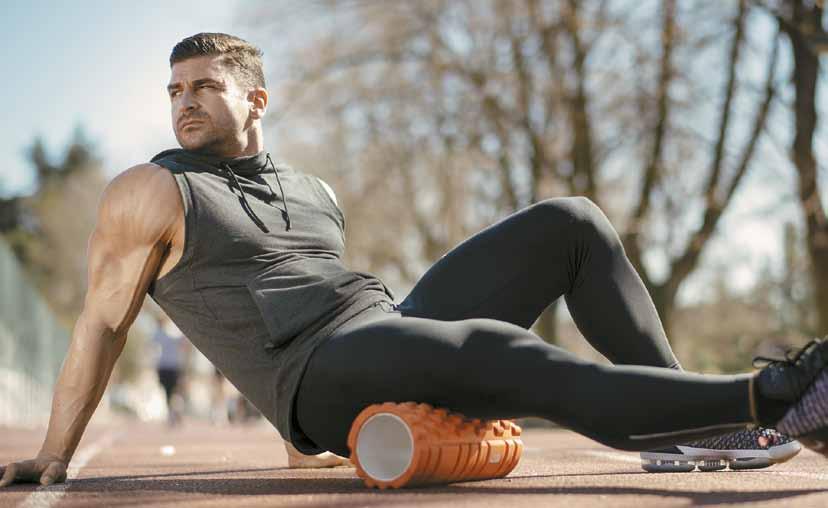On a Roll
Foam Rollers Ease Pain and Workout Recovery
justlife/AdobeStock.com
by Marlaina Donato
v.j.matthew/AdobeStock.com
fit body
Contact us today to advertise in our next issue. 555-555-5555
30
Tampa Bay Edition
Freeing the Body Fascia, the body’s all-pervasive connective tissue, tightens like an invisible net from injury and other stresses and can adhere to the underlying muscles, creating pain and restriction. “Foam rolling has the power to change and realign the 12 fascial lines responsible for human movement and support,” says Kivett. “Those same fascial lines also sense and transmit pain and emotion far greater than any nerve or muscle and respond well to foam rolling. There’s an emotional and spiritual release in the body when fascia is compressed and released. That response facilitates a structural change to human alignment and an immediate change in pain levels for all types and causes of pain.” Foam rollers offer an opportunity for self-care, according to Los Angeles fitness trainer Ashley Borden. “Foam rolling is one of the best ways to troubleshoot your own body, keep it healthy and mobile. UsNATampa.com
ing an inexpensive tool like a foam roller not only feels good, but it also connects you to your body. Foam rolling the entire body encourages circulation and an immediate feeling of relief afterwards. My clients who don’t like to work out are usually surprised how good they feel post-rollout and feel encouraged to do more.” She cites research that shows that a dynamic warm-up, paired with the use of foam rollers before and after workouts, amplifies recovery and aids in the repair of muscular micro-tears. For Rafal Augustynowicz, founder of TeamRAF Fitness, in Kent, England, it’s about counteracting lifestyle stresses. “The foam roller is a beautiful and great tool, especially in the 21st century, when we sit too many hours. It is a great tool to get our mobility and our posture back to normal.”
Recovery, Joint Pain and Sciatica Gently rolling targeted muscles below and above specific joints can help to resolve certain types of pain, including in the knee. “Many times, when a person has pain in the knee, it’s more than likely they have
sergmakssmol/Adobestock.com
F
oam rolling— rolling parts of the body on top of a lightweight foam cylinder—targets trigger points or painful knots in muscles and is a valuable tool for reducing chronic pain and enhancing workout recovery. From sciatica to pelvic floor dysfunction, there is a foam roller for almost every condition, including low- to high-density, heated and textured types for massage-like benefits. Research during the past several years shows that using foam rollers before or after exercise quells fatigue, improves joint mobility, lowers risk of injury and eases muscle soreness. Its effectiveness is attributed to the activation of the central nervous system resulting in better circulation and reduced inflammation. “Foam rollers are used to relieve tension in the fascia (connective tissue), ‘roll’ out sore muscles and provide a soothing, self-controlled, soft-tissue massage,” says Amber Kivett, owner of Kivett Kinetic Solutions, in Monrovia, Indiana. “They can
also be used for proprioception, balance, flexibility, core stability training and most importantly, natural pain relief.”




